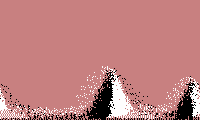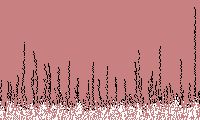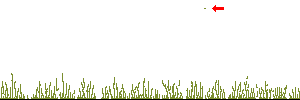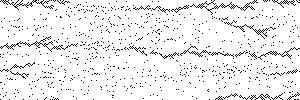 Eadweard Muybridge
Eadweard Muybridge
100 motion studies by Eadweard Muybridge | "On June 15, 1878, a clear and sunny day in Palo Alto, California, amid a gathering of art and sports journalists, Eadweard Muybridge photographed the first successful serial images of fast motion."
His experiment solved the question of whether a running horse is ever out of contact with the ground. The above site shows his plates formatted into animated gifs.
The Zo÷praxiscope
Freeze Frame
Chronophotographic
 Robot Zoo
Robot Zoo
The Robot Zoo | "The Robot Zoo is a traveling exhibit that reveals the biomechanics of giant robot animals to illustrate how real animals work."
I wish prints were available.
 Grid
Grid
Glen Murphy of Bodytag has a nice series going: grid3, grid3p5, grid4, and grid5. These could make great use of a vector output format for paper printing.
 No More D-Plan
No More D-Plan
The Dismemberment Plan is disbanding. I wish I'd taken one of the chances I had to see them play. If you haven't heard of them, do so; I suggest Emergency & I. If you've already heard some, find a copy of !.
 Living Jewels
Living Jewels
Living Jewels | "Poul Beckmann presents stunning close-up studio photographs of one of the most varied and beautiful families of species on the planet, the Beetles." (via Dublog)
Some favorites:
 Yellowtail
Yellowtail
Golan Levin has released a Proce55ing version of Yellowtail, with source code. Dragging the mouse draws a stroke, and releasing animates it: some are like flatworms swimming away, others are like pulsing cave paintings. It rewards both frantic scribbling and careful exploration. Try drawing a letter or kanji, and watch it unfold and reform. Very organic.
A full screen version for PC is available from his site. It allows more detailed sketches and generates some nice audio from them.
 Down and Out in the Magic Kingdom
Down and Out in the Magic Kingdom
I just finished reading Cory Doctorow's Down and Out in the Magic Kingdom. It was fairly short; fortunately so, since I had a difficult time putting it down. I liked that he didn't dwell on the issues of the technologies he introduces — it leaves the reader to discuss the possibilities with cornered friends.
I never would have read it were it not available online under the Creative Commons license; it sounded interesting, but not enough for me to take a chance on it. Now I know it's worth the buy, and will be purchasing a couple for gifts.
 more Pollen
more Pollen |
Comments (0)


Another Pollen experiment. This one reacts to the user, altering cell movement rules based on mouse position.
 Gen Art Weblogs
Gen Art Weblogs
BlueSpoon
The weblog of Alex Williams, who works with video and realtime graphics for club visuals. He's even worked with Warp Records. Make sure to watch the generative film Tom Thumb.
averageJackal
Graphics weblog with an emphasis on SVG. Nice experiments, check out Traffic.
 Pollen
Pollen
The alife program I mentioned recently has been posted. Example #4 is interesting: two types of cells that eventually self organize into a single tentacle. The base code for these is really simple; only about a page long.
Thanks Matt Jones, for the mention; it made my day. And a long overdue thanks to the guys at Suppose. Your weblogs are some of my favorites.
 Threadless
Threadless
My first Threadless T-shirt submission is up. I wish I'd spent more time on the submitted image; it's too small to see how detailed the object really is. It was produced with some old output from an errant L-System implementation.
I only voted my shirt a "3." I like this one better; although "robot" should be spelled ロボット rather than ロボト.
 GoogleSynth
GoogleSynth
GoogleSynth is a texture synthesiser. It grabs a couple of images from Google's Image Search and applies an algorithm that tries to make one image using pieces of the other image. Example output.
 Love in a Petri Dish
Love in a Petri Dish
Yesterday I stumbled onto the most romantic thing I've ever said, while explaining the alife program pictured below. My friend looked over at what I was working on, and I explained that the particles were supposed to behave in such a way that they self organize into towers, ala slime molds. She asked why some of the particles were suspended. "Well, they should fall, but I told them they wouldn't if they were next to another one. So, they don't fall because they're holding on to each other."

aLove aside, this particular simulation is looking good. As with any good sim, the bugs are as interesting as the intended behavior. In the sim pictured below, I was trying to get the particles to self organize into a bridge, but I ended up with fluid dynamics...

Pictured below, I've got some crystalization happening, using the DLA model.

It'll be a while before I put out this code; it's quite short, but too messy to be useful.
 Takeshi Murakami
Takeshi Murakami
ToyboxDX on Takeshi Murakami | "The power of Wink comes from its refusal to engage the question, 'is it art or is it a toy?'. Frankly, it's a moot point. Art is a commodity and a fetish, just like toys are. The only real difference is that toys are not subjected to the same level of cultural scrutiny and interpretation and exchange as art. Except, that is, in obsessive, otaku-derived sub-cultures like collecting, and fandom in general." (via greg.org)
I bought a copy of Takashi Murakami: The Meaning of the Nonsense of the Meaning a while back, and I really enjoyed his work. The media include toys, t-shirts, inflatable objects, sculpture, print, painting ... he's sort of a hyper-Warhol. I appreciate that he admits (at least in some interviews) that his work seeks visual appeal rather than artistic goals.
 Phyllotaxis
Phyllotaxis
A nice exhibit on phyllotaxis, the process that creates spiral patterns in plants (sunflowers, pinecones, etc).
 Star
Star
A shooting star just went by. I usually have doubts, but my eyes were fixed and it was much larger and brighter than even Polaris.
I had a good New Year's celebration. I drove out to Champaign-Urbana to see some high-school friends I hadn't seen in about a year. We went to an overcrowded private party at Joe's Brewery. Between shouting conversations and fighting for a drink at the open bar, I resumed* thinking about two bar phenomena:
1. Self-organization. When a crowded party starts, you have to make your own path to go anywhere. Eventually, people adapt by forming trains — people latch on to a pusher who is going their way, and symbiotically provide justification for his pushing.
2. Luck. Things fall into place in incredible ways. It's as if outside reality only exists to serve you, but it takes a lot of drinking to dull your modesty and accept it.
* It'd been years since I'd had more than two drinks in a night.






